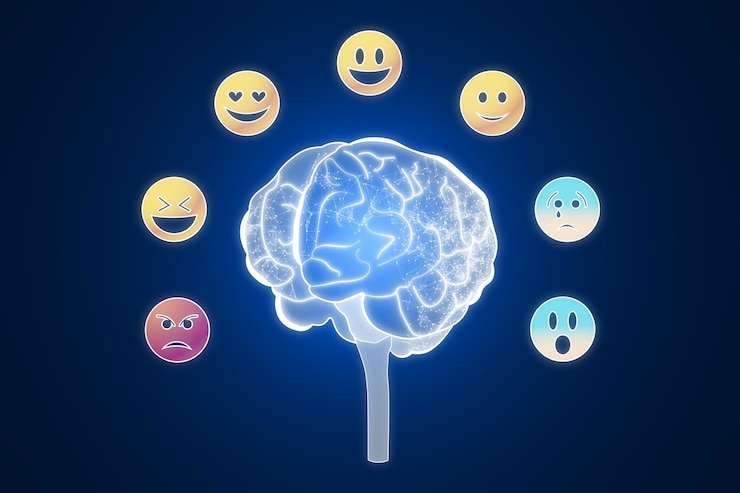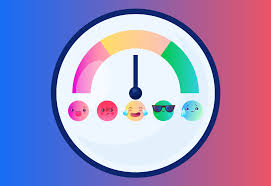Today’s working world has become a space where constant demands, urgency, and pressure are the norm. Many people wake up each day with a weight on their chest—an invisible burden they carry into the office or to their home desk. Workplace anxiety is no longer the exception; it's a shared experience.
But this article isn’t another “5 steps to calm your anxiety” manual. Because we believe anxiety isn’t solved by trying to control it. Anxiety is not a flaw. It’s a signal. An invitation to look deeper, to connect with our emotions, to listen to what we’ve been ignoring.
And that’s where emotional competencies come in. Not as a trend, but as a real lifeline. As a way to prevent everyday anxiety from turning into chronic exhaustion—the dreaded burnout.

Anxiety and burnout: a dangerous relationship
Prolonged work-related anxiety can be the first step toward complete burnout. Burnout doesn’t arrive suddenly—it creeps in when the body and mind have been trying to sustain the unsustainable for too long.
According to the WHO, burnout is a syndrome resulting from chronic workplace stress that has not been successfully managed. And anxiety is, more often than not, its most obvious precursor.
Being unable to disconnect, feeling constant pressure, becoming irritable or demotivated, and experiencing emotional fatigue that doesn’t go away—even with time off. That’s the path many people follow unknowingly, until their body says: enough.

What are emotional competencies and why are they key?
Emotional competencies are the skills that allow us to identify, understand, manage, and express our emotions appropriately. They are the foundation of emotional intelligence, and they are not innate—they can be learned.
These competencies are key because they help us manage our internal world. They allow us to see anxiety as a message, not a threat. They give us the ability to pause, ask ourselves what we’re feeling, why we’re feeling it, and what we need in that moment.
According to the Yale Center for Emotional Intelligence, people who develop emotional competencies show significantly lower levels of anxiety, greater job satisfaction, and a notable decrease in the risk of burnout..
One of the most influential voices in this field is Marc Brackett, director of the Yale Center for Emotional Intelligence, who argues that our emotions are not the problem—the problem is the lack of tools to understand them.

In this interview about his book Permission to Feel, Brackett clearly explains how learning to feel—not to suppress—can transform our mental health, our relationships, and also our work performance.
But how does emotional disconnection show up?
One of the deepest causes of workplace anxiety is emotional disconnection. What do we mean by that? Running on autopilot day in and day out, ignoring what we feel, wearing productivity masks while we’re falling apart inside.
In many companies, showing emotions, talking about distress, or asking for help is still seen as unprofessional. This creates cold, dehumanized environments where people feel alone, invisible, or trapped.
The result is chronic anxiety fed by silence. And little by little, that anxiety turns into demotivation, insomnia, physical pain, isolation, and ultimately—burnout.

Emotional competencies to prevent burnout
Faced with this scenario, emotional competencies are not just useful—they’re essential. Here are some key ones:

Emotional awareness
Knowing what you're feeling, naming it, and understanding its cause.

Emotional regulation
Not suppressing what you feel, but learning to manage it in a healthy way.

Empathy
Recognizing and respecting the emotions of others.

Assertiveness
Expressing your needs without aggression or submission.

Self-compassion
Treating yourself with kindness instead of harsh self-demand.
These skills not only prevent burnout. They also promote more human, collaborative, and sustainable workplaces.
How do you train these competencies?
Developing emotional competencies is an ongoing process. Some helpful practices include:
1. Doing a daily emotional self-check: how am I feeling? What do I need?
2. Learning to identify and name emotions using a broad emotional vocabulary.
3. Creating space for emotional conversations in work teams.
4. Accepting uncomfortable emotions as a natural part of human experience.
5. Reading, training, or seeking professional support when needed.
Companies can and should also take part in this development by offering trainings, coaching, emotional mindfulness sessions, or psychological well-being programs.

Toward an emotionally intelligent workplace culture
It's not enough for individuals to learn to regulate their anxiety if the work environment remains hostile. Real change happens when culture also shifts.
Emotionally intelligent organizations:
• Promote psychological safety.
• Value emotional expression.
• Encourage self-care as part of sustainable productivity.
• Train empathetic, conscious, and present leaders.
This is not idealism. It’s a necessity. According to the American Psychological Association (2024), environments that invest in emotional intelligence show better retention rates, fewer stress-related absences, and greater innovation.
Workplace anxiety isn't a problem solved by ignoring it or forcing ourselves to push through. It's an urgent invitation to reflect on how we live and how we work.
Emotional competencies don’t make us less professional. They make us more human. And being human is exactly what we need most right now.
If you’re feeling anxiety at work, you’re not broken. You’re just hearing a part of yourself asking to reconnect. Listen to it. Take care of it. Develop your emotional skills. And start building a work life where you can be yourself—without paying the price of your mental health.

References
American Psychological Association. (2024). Workplace emotional health report. https://www.apa.org
Brackett, M. (2019). Permission to feel: Unlocking the power of emotions to help our kids, ourselves, and our society thrive. Celadon Books.
David, S. (2016). Emotional agility: Get unstuck, embrace change, and thrive in work and life. Avery.
World Health Organization. (2022). Burnout as an occupational phenomenon. https://www.who.int/publications
TEDx Talks. (2019, noviembre 22). Cómo entender tus emociones para mejorar tu bienestar [Video]. YouTube. https://www.youtube.com/watch?v=Sw9Yi3ZnpJQ
Yale Center for Emotional Intelligence. (2020, abril 17). Permission to feel – Marc Brackett en entrevista [Video]. YouTube. https://www.youtube.com/watch?v=JFNfQnSxC1k
Anxiety at work